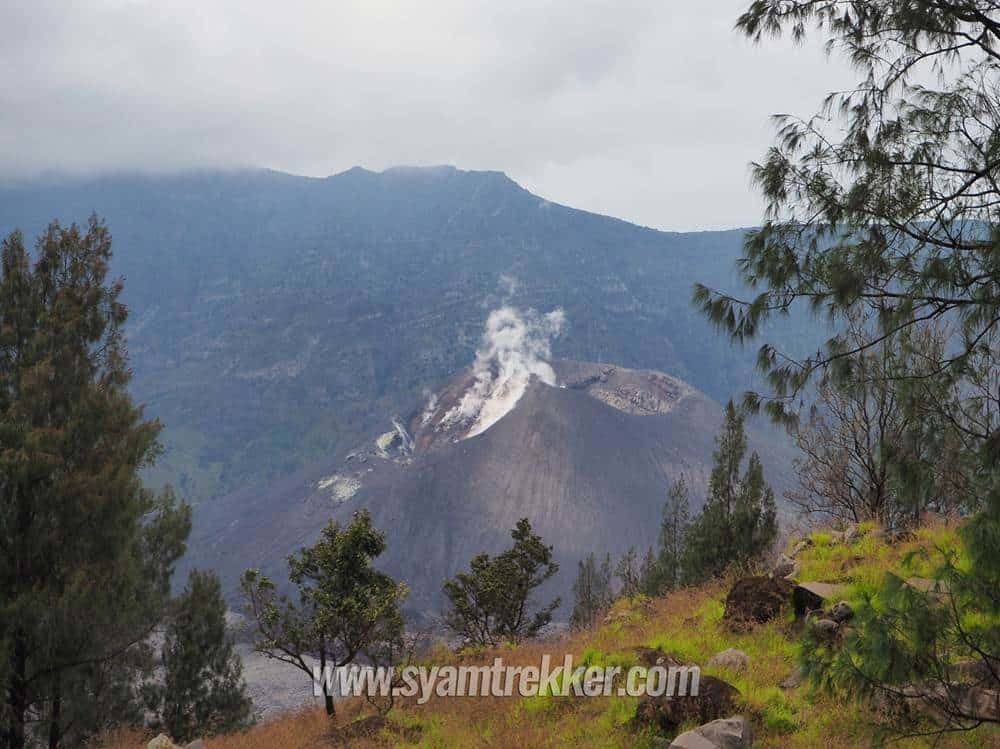The volcano and the caldera are protected by the Mount Rinjani National Park established in 1997. Tourism is increasingly popular with trekkers able to visit the rim, make their way into the caldera or even to make the more arduous climb to the highest point fatalities, however, are not unheard of.
In July 2009 the summit route was closed due to volcanic activity at that time and subsequently reopened when the activity decreased. During early 2010 up to and including May 2010 access to Rinjani was at times again restricted due to volcanic activity.

The park is popular for mountain climbs and trekking and represents an important nature reserve and water catchement area. The park is officially 41,330 hectares (159.6 sq mi) within the park boundaries and includes a further 66,000 hectares (250 sq mi) of protected forest outside.
The mountain and its satellites form the Mount Rinjani National Park (Taman Nasional Gunung Rinjani). In 2008, the Indonesian government proposed to UNESCO that Mount Rinjani be one of the world’s official geoparks. If this was approved by UNESCO, Mount Rinjani would become the first such geological park in Indonesia.
It has been claimed that the preliminary documentation required for UNESCO registration has not received sufficient support from the Nusa Teggara Barat government offices. Among the requirements to become a geo-park sufficient information must be supplied to show that the location has sufficient and appropriate management, information services, access to educational instruction to facilitate “knowledge-based geotourism”, the implementation of a sustainable regional economy, biodiversity conservation, and to have established public access to the park area.
Mount Rinjani has obtained the World Legacy Award from Conservation International and Traveller (2004), and was a finalist for Tourism for Tomorrow Awards (2005 and 2008) from the World Travel Tourism Council (WTTC).
Rinjani owl was found in 2003 and after 10 years evidence research is recognized as a new endemic owl (before it, in the 19th century is recognized as Mollucas owl).







